前言: 今晚写一篇关于学员/讲师/销售员CRM系统。这个小项目是27号开始做的,大概搞了一星期不到。我把一些知识点总结下,还写下当时克服的BUG。
Django练习小项目:学员管理系统设计开发
带着项目需求学习是最有趣和效率最高的,今天就来基于下面的需求来继续学习Django
项目需求:
- 分讲师\学员\课程顾问角色
- 学员可以属于多个班级,学员成绩按课程分别统计
- 每个班级至少包含一个或多个讲师
- 一个学员要有状态转化的过程 ,比如未报名前,报名后,毕业老学员
- 客户要有咨询纪录, 后续的定期跟踪纪录也要保存
- 每个学员的所有上课出勤情况\学习成绩都要保存
- 学校可以有分校区,默认每个校区的员工只能查看和管理自己校区的学员
- 客户咨询要区分来源
拿到需求后,先要分析,再设计表结构: 超级重要!!


1 from django.db import models 2 3 from django.contrib.auth.models import User #django自带的用户认证表 4 # Create your models here. 5 course_type_choice = (("online", u"网络班"), 6 ("offline_weekend", u"面授班(周末)"), 7 ("offline_fulltime", u"面授班(脱产)"), 8 ) # 课程类型 9 10 class School(models.Model): #学校表 11 name = models.CharField(max_length=128, unique=True) 12 city = models.CharField(max_length=64) 13 addr = models.CharField(max_length=128) 14 15 def __str__(self): #给前端界面显示学校名 16 return self.name 17 18 19 class UserProfile(models.Model): #内部员工表 20 # User是一张表,在UserProfile关联User表,类似继承User表,也可以拓展别的字段 21 # 这里不能用ForeignKey(一对多),比如User表里有一个zcl, 22 # 用FK,则可以在UserProfile创建多个zcl用户,实际上UserProfile应当只有一个用户 23 # 用OneToOne关联,只能有一个UserProfile用户与User关联,其它用户不能关联, 24 # 在数据库层面OneToOne与ForeignKey实现是相同的,都是用FK, OneToOne是django admin层面做限制的 25 user = models.OneToOneField(User,verbose_name=u"登陆用户名") 26 name = models.CharField(max_length=64, verbose_name=u"全名") 27 school = models.ForeignKey("School") #比如领导可以管理多个学校,但有些老师就只能对应一个学校 28 user_type_choice = (("salespeople", u"销售员"), 29 ("teachers", u"讲师"), 30 ("others", u"其它"), 31 ) 32 user_type = models.CharField(verbose_name=u"用户类型",max_length=64, choices=user_type_choice, default="others") 33 34 def __str__(self): 35 return self.name 36 37 class Meta: 38 # 加上权限。can_del_customer是存在数据库中的,"可以删除用户"是显示在界面的 39 # permissions = (("can_del_customer",u"可以删除用户"),) 40 # 加入三条权限 41 permissions = (("view_customer_list",u"可以查看客户列表"), # 对销售员的权限 42 ("view_customer_info", u"可以查看客户详情"), 43 ("edit_own_customer_info", u"可以修改自己的客户信息"), 44 45 ("view_class_list", u"可以查看班级列表"), # 对讲师的权限 46 ("view_class_info", u"可以查看班级详情"), 47 ("edit_own_class_info", u"可以修改自己的班级信息"), 48 49 ) 50 51 52 class CustomerTrackRecord(models.Model): #客户跟踪记录表 53 customer = models.ForeignKey("Customer") #一个客户可有多个跟踪记录 54 track_record = models.TextField(u"跟踪记录") 55 track_date = models.DateField(auto_now_add=True) #跟踪日期 56 tracker = models.ForeignKey(UserProfile) #一条跟踪记录只能有一个追踪人 57 status_choices = ((1, u"近期无报名计划"), 58 (2, u"2个月内报名"), 59 (3, u"1个月内报名"), 60 (4, u"2周内报名"), 61 (5, u"1周内报名"), 62 (6, u"2天内报名"), 63 (7, u"已报名"), 64 ) 65 status = models.IntegerField(u"状态",choices=status_choices,help_text=u"选择客户此时的状态") 66 67 def __str__(self): 68 return self.customer.qq 69 70 71 class Course(models.Model): #课程表 72 name = models.CharField(max_length=64, unique=True) #课程名 73 online_price = models.IntegerField() #网络班课程价格 74 offline_price = models.IntegerField() #面授班课程价格 75 introduction = models.TextField() #课程介绍 76 77 def __str__(self): 78 return self.name 79 80 81 class ClassList(models.Model): # 班级表 82 course = models.ForeignKey(Course, verbose_name=u"课程") # 关联课程表 83 semester = models.IntegerField(verbose_name=u"学期") 84 teachers = models.ManyToManyField(UserProfile, verbose_name=u"讲师") # 多对多关联 85 start_date = models.DateField(verbose_name=u"开班日期") # 开班日期 86 graduate_date = models.DateField(blank=True,null=True) # 结业日期 87 # 课程类型 88 course_type = models.CharField(max_length=64, choices=course_type_choice,default="offline_weekend") 89 90 def __str__(self): 91 return "%s[%s期][%s]" % (self.course, self.semester, self.get_course_type_display()) 92 93 class Meta: 94 # 联合唯一,python网络班15期只能有一个 95 unique_together = ("course", "semester", "course_type") 96 97 98 class Customer(models.Model): # 学员表 99 qq = models.CharField(max_length=64, unique=True) 100 # 名字可为空,刚来咨询时不会告诉name 101 name = models.CharField(max_length=64, blank=True, null=True) 102 phone = models.BigIntegerField(blank=True, null=True) # 不用IntegerField,不够长 103 course = models.ForeignKey("Course") # 学员咨询的课程,只记录咨询的一个课程,若有多个可备注说明 104 course_type = models.CharField(verbose_name=u"课程类型", max_length=64, choices=course_type_choice, default="offline_weekend") 105 consult_memo = models.TextField(verbose_name=u"咨询备注") # 咨询内容 106 source_type_choice = (("qq", u"qq群"), 107 ("referral", u"内部转介绍"), 108 ("51CTO", u"51CTO"), 109 ("agent", u"招生代理"), 110 ("others", u"其它"), 111 ) #客户来源 112 source_type = models.CharField(max_length=64, choices=source_type_choice, default="others") 113 # 表示自关联(Customer表关联Customer表),也可用referral_from = models.ForeignKey("Customer") 114 # 1.加上self 2.自关联要加上related_name,通过internal_referral反查数据 115 # 反向关联得加上related_name: eg:A介绍B来上课,对A通过referral_from可找到B;反之需通过referral 116 # 该字段表示该学生被谁介绍来上课的 117 referral_from = models.ForeignKey("self", blank=True, null=True, related_name="referral") 118 119 status_choices = (("singed", u"已报名"), 120 ("unregistered", u"未报名"), 121 ("graduated", u"已毕业"), 122 ("drop_off", u"退学"), 123 ) # 客户来源 124 status = models.CharField(max_length=64, choices=status_choices, default="unregistered") 125 consultant = models.ForeignKey("UserProfile", verbose_name="课程顾问") 126 date = models.DateField(u"咨询日期", auto_now_add=True) # auto_now_add创建时自动添加当前日期 127 class_list = models.ManyToManyField("ClassList", blank=True) # 对于多对多字段,不需要null=true 128 129 def __str__(self): 130 return "%s[%s]" % (self.qq, self.name) 131 132 133 class CourseRecord(models.Model): # 上课记录表 134 class_obj = models.ForeignKey(ClassList) # 关联班级 135 day_num = models.IntegerField(u"第几节课") 136 course_date = models.DateField(auto_now_add=True, verbose_name=u"上课时间") 137 teacher = models.ForeignKey(UserProfile) # 讲师 138 139 # students = models.ManyToManyField(Customer) 不能在这里多对多,if do this,can't 查看出勤情况 140 def __str__(self): 141 return "%s[day%s]" % (self.class_obj, self.day_num) 142 143 class Meta: # 联合唯一 python自动化12期网络班 12;只能有一个12天 144 unique_together = ("class_obj", "day_num") 145 146 147 class StudyRecord(models.Model): 148 # 关联上课记录表,上课记录表有第几节课字段,同时也与ClassList关联,可知道是哪个班第几期 149 course_record = models.ForeignKey(CourseRecord) 150 student = models.ForeignKey(Customer) # 关联学员表 151 record_choices = (('checked', u"已签到"), 152 ('late',u"迟到"), 153 ('no_show',u"缺勤"), 154 ('leave_early',u"早退"), 155 ) 156 record = models.CharField(u"状态", choices=record_choices,default="no_show",max_length=64) 157 score_choices = ((100, 'A+'), 158 (90,'A'), 159 (85,'B+'), 160 (80,'B'), 161 (70,'B-'), 162 (60,'C+'), 163 (50,'C'), 164 (40,'C-'), 165 (0,'D'), 166 (-1,'N/A'), # 暂无成绩 167 (-100,'COPY'), 168 (-1000,'FAIL'), 169 ) 170 score = models.IntegerField(u"本节成绩",choices=score_choices,default=-1) 171 date = models.DateTimeField(auto_now_add=True) 172 note = models.CharField(u"备注",max_length=255,blank=True,null=True) 173 174 def __str__(self): 175 return "%s,%s,%s" % (self.course_record,self.student,self.get_record_display())
先来张图看看效果: 下图是销售员Alex登陆后看到的界面

点击右上方Alex已招学员,出现下图界面:
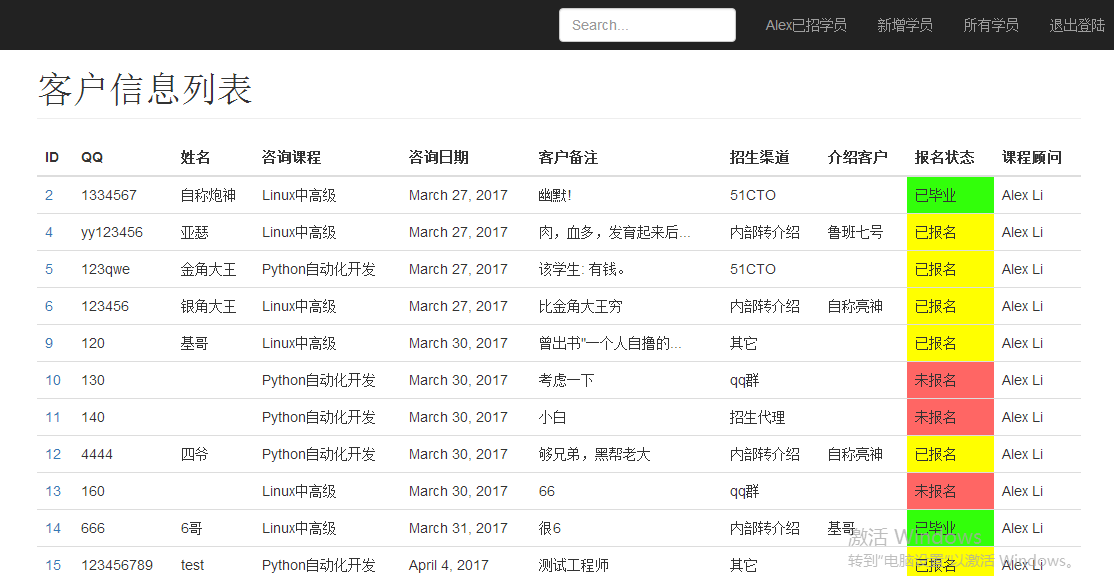
一、前端界面实现
界面看着我感觉是蛮漂亮的,登陆界面和信息界面都是搞bootstrap模版的。只要将bootstrap模版修改下,就变成所需要的界面啦。不会修改的可以看看如何使用bootstrap。
二、字数显示限制
如果备注过多,会使界面不好看,要想使备注只显示一定的字数,可用下列方法: 只显示13个字节
<td>{{ customer.consult_memo|truncatechars:13}}</td>

三、报名状态加色
第一种方法,比较麻烦,有兴趣可看django进阶-modelform&admin action
第二种方法更简单
1. 在bootstrap添加自定义的css样式文件,custom.css
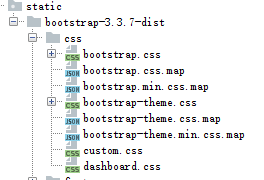
2. 在基础模版(我定义的是base.html,其它html模块是继承它的)导入custom.css文件:
<link href="/static/bootstrap-3.3.7-dist/css/custom.css" rel="stylesheet">
3. 你随意在custom.css定义样式


.singed{background-color:yellow;
}.unregistered{background-color:#ff6664;
}.graduated{background-color:#32ff0a;
}.drop_off{background-color:bisque;
} 4. 在对应的customer.html的标签加入样式; customer.status是后台传给前端的,是学生的报名状态。
<td class="{{ customer.status }}">{{ customer.get_status_display }}</td>
四、分页功能
其实Alex销售员登陆后看到的界面只有两条客户的信息,这是我在后台写的。注意看左下角有个分页,类似与百度搜索的分页。其实分页实现起来还是有点难度的。
先看django官方文档。官方文档写得很详细!!


>>> from django.core.paginator import Paginator >>> objects = ['john', 'paul', 'george', 'ringo'] >>> p = Paginator(objects, 2) >>> p.count 4 >>> p.num_pages 2 >>> type(p.page_range) # `<type 'rangeiterator'>` in Python 2. <class 'range_iterator'> >>> p.page_range range(1, 3) >>> page1 = p.page(1) >>> page1 <Page 1 of 2> >>> page1.object_list ['john', 'paul'] >>> page2 = p.page(2) >>> page2.object_list ['george', 'ringo'] >>> page2.has_next() False >>> page2.has_previous() True >>> page2.has_other_pages() True >>> page2.next_page_number() Traceback (most recent call last): ... EmptyPage: That page contains no results >>> page2.previous_page_number() 1 >>> page2.start_index() # The 1-based index of the first item on this page 3 >>> page2.end_index() # The 1-based index of the last item on this page 4 >>> p.page(0) Traceback (most recent call last): ... EmptyPage: That page number is less than 1 >>> p.page(3) Traceback (most recent call last): ... EmptyPage: That page contains no results
后台实现:
1 def customers(request):
2 print(">>>>request:",request)
3 # 查找所有客户,获取所有信息的结果集,但并不是所有信息都已经取出来了(如果有上万条数据,不能一次性取出来,先取一部分),
4 customer_list = models.Customer.objects.all()
5 print(">>>>customers:", customer_list)
6 paginator = Paginator(customer_list, 2) # 生成分页实例: 每一页有两条数据
7 page = request.GET.get("page") # 获取前端点击的页数,参数page可自定义
8 try:
9 customer_objs = paginator.page(page) # 生成第page页的对象
10 except PageNotAnInteger:
11 # If page is not an integer, deliver first page
12 # 如果输入的页码不是下标,则返回第一页
13 customer_objs = paginator.page(1)
14 except EmptyPage:
15 # If page is out of range (e.g. 9999), deliver last page of results.
16 # 如果输入的页码超出,则跳转到最后的页码
17 customer_objs = paginator.page(paginator.num_pages)
18
19 return render(request, "crm/customer.html", {"customer_list": customer_objs}) 前端实现:
1 <div class="pagination">
2
3 <nav>
4 <ul class="pagination">
5 {% if customer_list.has_previous %}
6 <li class=""><a href="?page={{ customer_list.previous_page_number }}" aria-label="Previous"><span aria-hidden="true">«</span></a></li>
7 {% endif %}
8
9 {% for page_num in customer_list.paginator.page_range %}
10 <!-- abs_page为函数名,后两个为参数 -->
11 {% abs_page customer_list.number page_num %}
12
13 {% endfor %}
14
15 {% if customer_list.has_next %}
16 <li class=""><a href="?page={{ customer_list.next_page_number }}" aria-label="Next"><span aria-hidden="true">»</span></a></li>
17 {% endif %}
18 </ul>
19 </nav>
20
21 </div> 第一次进入http://127.0.0.1:8000/crm/customer/页面时,请求为get方式,后台接收到的page参数为空,故会出PagenotAnInterger异常,故会返回到第一页!!
注意前端的第九行代码: customer_list.paginator.page_range是页数的范围。customer_list只是一个第几页的实例而已,是无法获取到页数的范围的。
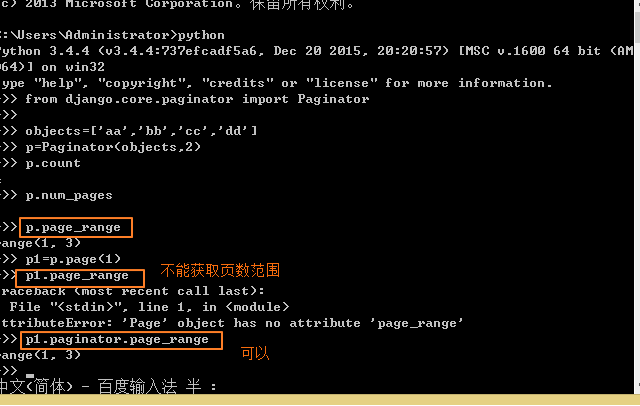
但是问题来了,如果,你有100条数据,每页只放两条数据,意味着界面得有50个button,基本上页面是放不下的。
如果页面过多,看下百度怎么处理:

可用abs绝对值,若当前页面为第6页,想让3、4、5和7、8、9也显示出来,可在循环判断页面时,利用abs, 当|循环的页面值-当前的页面值|<=3 ,则显示。
但问题又来了,前端的templates可没有abs取绝对值这种后台才有的方法,怎么办??
自定义template tags
https://docs.djangoproject.com/es/1.9/howto/custom-template-tags/
效果图:


后台是如何自定义模版??
首先自定义templates模版,我随便建了个文件custom_tags.py,必须放在新建包templatetags下:
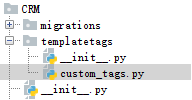
custom_tags.py: 当页码绝对值之差小于3时,则返回页码按钮的html给前端,反之不返回。
1 from django import template
2 from django.utils.html import format_html
3
4 register = template.Library() #django的语法库
5
6
7 @register.simple_tag
8 def abs_page(current_page, loop_page):
9 offset = abs(current_page - loop_page)
10 if offset < 3:
11 if current_page == loop_page:
12 page_ele = "<li class='active'><a href='?page=%s'>%s</a></li>" % (current_page, current_page)
13 else:
14 page_ele = "<li class=''><a href='?page=%s'>%s</a></li>" % (loop_page, loop_page)
15 return format_html(page_ele) #将字符串转化为html,返回给前端
16 else:
17 return ""
五、modelform进阶
modelform之前有写过,django进阶-modelform&admin action, 但主要是写django自带的admin。
现在我有个需求,销售员Alex想查看客户的详细信息。只需只击客户的ID号,便可查看,当然也可以修改。
前端:
<td><a href="/crm/customers/{{customer.id}}/">{{customer.id}}</a></td>
urls:
# 当学员id当作参数,传给customer_detail方法
url(r'^customers/(\d+)/$', views.customer_detail),
后台:
def customer_detail(request,customer_id):customer_obj = models.Customer.objects.get(id=customer_id)form = forms.CustomerModelForm()return render(request,"crm/customer_detail.html",{"customer_form":form})
看前端界面显示: 虽然能显示出表单,但无法显示出学员的信息,而且太丑了!!
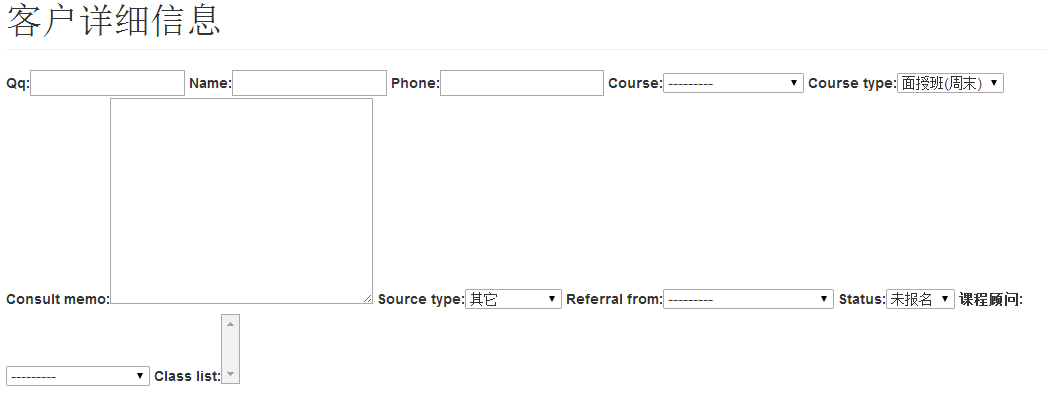
如何显示出学员的信息:
customer_obj = models.Customer.objects.get(id=customer_id)form = forms.CustomerModelForm(instance=customer_obj) # 将数据对象当作参数传入
如何使前端界面更漂亮:
forms.py表单文件:


1 from django.forms import Form,ModelForm 2 from CRM import models 3 4 5 # 客户的form表单,可用于修改客户的信息,增加客户的前端界面 6 class CustomerModelForm(ModelForm): 7 8 class Meta: 9 model = models.Customer # 绑定Customer表 10 exclude = () 11 12 # 重构modelform的初始化类的方式;前面已经继承modelform,下面进行重构 13 def __init__(self, *args, **kwargs): 14 super(CustomerModelForm, self).__init__(*args, **kwargs) 15 16 for field_name in self.base_fields: 17 field = self.base_fields[field_name] # 循环取出所有字段 18 field.widget.attrs.update({"class": "form-control"}) # 给字段加上样式
前端: 样式是从bootstrap参考来的


1 {% block page_content %} 2 <!-- action为空表示数据提交到当前url --> 3 <form class="form-horizontal" method="post" action="">{% csrf_token %} 4 {% for field in customer_form %} 5 <div class="form-group"> 6 {% if field.field.required %} <!--若是必填字段 --> 7 <label class="col-sm-2 control-label"> 8 <span style="color: red;font-size: larger">*</span>{{ field.label }} 9 </label> 10 {% else %} <!-- label在django默认为加粗 --> 11 <label style="font-weight: normal" class="col-sm-2 control-label">{{ field.label }}</label> 12 {% endif %} 13 <div class="col-sm-8"> 14 {{ field }} 15 {% if field.errors %} <!--错误提示modelform已经帮我们封装好了--> 16 <ul> 17 {% for error in field.errors %} 18 <li style="color: red">{{ error }}</li> 19 {% endfor %} 20 </ul> 21 {% endif %} 22 </div> 23 </div> 24 {% endfor %} 25 <div class="col-md-10"> 26 <button type="submit" class="btn btn-success pull-right">Save</button> 27 </div> 28 </form> 29 30 {% endblock %}
效果图:

修改后保存信息


1 def customer_detail(request,customer_id): 2 #通过modelform显示某用户的详细信息,修改后可保存 3 customer_obj=models.Customer.objects.get(id=customer_id) 4 if request.method=="POST": 5 #必须加instance=customer_obj告诉修改哪条数据,否则就是创建数据了 6 form=forms.CustomerModelForm(request.POST,instance=customer_obj) 7 if form.is_valid(): 8 form.save()#修改后保存 9 else: 10 form=forms.CustomerModelForm(instance=customer_obj) 11 return render(request,"crm/customer_detail.html",{"customer_form":form})
六、必填与非必填字段
效果图: 必填字段有加粗,且左上角有红色*号

只需修改下前端代码即可:
1 {% if field.field.required %} <!--若是必填字段 -->
2 <label class="col-sm-2 control-label">
3 <span style="color: red;font-size: larger">*</span>{{ field.label }}
4 </label>
5 {% else %} <!-- label在django默认为加粗 -->
6 <label style="font-weight: normal" class="col-sm-2 control-label">{{ field.label }}</label>
7 {% endif %}
权限分配, 这个改天再写博客整理下: 三个角色的权限是不同的。对销售员来讲,无法修改非本人招收客户的信息。
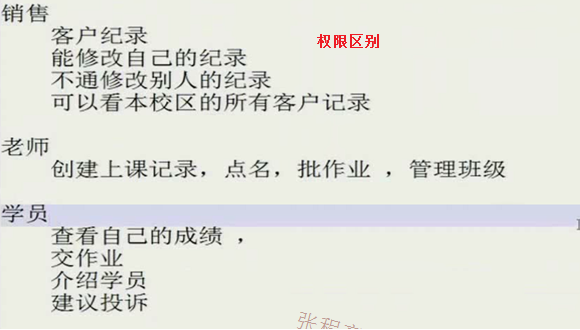
七、url别名
啥是url别名??
1 #当学员id当作参数,传给customer_detail方法,
2 #给该url起别名,一调用别名customer_detail,就关联上url
3 url(r'^customers/(\d+)/$',views.customer_detail,name="customer_detail"), 现在销售员想查看客户的详细信息,只需一点击客户的ID号便可查看。so, ID号必须是个a标签,下面来看看前端实现:
1 <!-- 这里查看学员的详细信息不应该写列,否则当url一改变,得来这里改代码 -->
2 <!-- <td><a href = " /crm/customers/ {{customer.id}} / "> {{ customer.id }} </a></td> -->
3
4 <td><a href = "{% url 'customer_detail' customer.id %}"> {{ customer.id }} </a></td> 注意了,如果不用url别名的话,就用第2行代码。但是,这样项目的可维护性大大降低了。当你需改动url时,必须到前端修改对应的a标签。如果用了url别名,就不用再来前端修改了。

看到没,我用浏览器审查元素,浏览器已经自动将ID号的a标签,转化为一条url. 神奇!!


states深入理解)







——搭建开发框架Express,实现Web网站登录验证)
)

Linux下CACTI完全搭建技术文档二)


)
)

